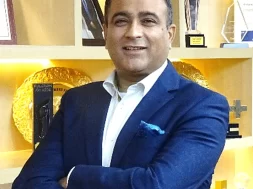
UAE, Saudi Arabia Will Lead the Gulf Market For Distributed Energy
The region’s total distributed energy market is estimated to garner a revenue of $602 million by the end of 2021
The distributed energy market in the Gulf Cooperation Council (GCC) is gathering momentum as declining technology costs, resource availability, and favourable policies encourage customers to self-generate renewable electricity and sell excess to the grid, according to Frost & Sullivan
The UAE and Saudi Arabia will lead the market for distributed energy, with Oman set to emerge as the fastest-growing market in the Gulf region, the consultancy said in its latest report on distributed energy rejuvenating the GCC power sector.
Oman’s Sahim and Dubai’s Shams Dubai schemes are driving the adoption of distributed solar photovoltaic (PV) systems in Commercial and Industrial (C&I) environments. In 2020, Saudi Arabia had launched its first regulatory framework for installation of rooftop systems of up to 2 megawatts (MW).
The region’s total distributed energy market, which encompasses distributed solar PV, distributed wind power, hybrid systems, diesel gensets, and gas gensets, is estimated to garner a revenue of $602 million by the end of 2021 from $480 million in 2020, registering strong double-digit growth at a compound annual growth rate (CAGR) of 25.4 percent.
The growth, according to the report, will be driven by the recovery in the diesel gensets market along with strong growth in rooftop solar PV and hybrid power systems.
“As utility-scale and distributed renewable resources become a crucial aspect of the region’s decarbonisation mandates, utilities will invest in grid modernisation solutions, digital platforms, software solutions, and systems associated with asset performance, modeling, and predictive analysis,” said Neeraj Sanjay Mense, Energy & Environment Industry Analyst at Frost & Sullivan.
“Additionally, distributed solar PV will drive the market for distributed energy resources (DERs) as an increasingly wider customer base is expected to adopt rooftop solutions, buoyed by the regulatory mechanisms supporting such installations.”
In April, Zawya had reported that Dubai had installed 299 MW of rooftop solar under Shams Dubai.
The Frost & Sullivan analyst pointed out that customers are showing preference for operation and output-based operating expenses (OPEX) contracts that include maintenance, performance guarantees, and availability, especially across residential, commercial, and industrial consumers.
“Further, behind-the-meter energy storage is set to become a game-changer for DERs in the region as it enhances the value proposition of the DERs and enables revenue stacking,” he added.
The rise in prosumer-ism, where individuals both consume and produce goods or services, will present tremendous growth opportunities to the stakeholders, which include:
OEMs, System Integrators, and Service Providers: Project developers and installers should move up the value chain to offer complex energy solutions, such as solar storage or microgrid solutions based on DER aggregation, load management optimisation, digital services, and aftermarket services. This will translate into diversification of revenue streams.
Consumer to Prosumer: System integrators should leverage the end-user need for energy security, diversification, and cost optimisation to provide packaged solar and battery storage solutions. C&I companies should focus on hybrid systems with battery storage to improve system reliability and ensure optimal consumption of available renewable resources.
Market Entry into DER: Utilities should actively pursue DER and storage, sharing their costs with customers, so they can deploy assets that help manage peak demand and provide an additional revenue stream.
They should also adopt new business models and forge new partnerships to diversify service offerings in an evolving electricity landscape.
Expanding Solution Offerings: Energy service companies (ESCOs) should focus on raising customer awareness about the types of contracts available for DER projects and acquiring distributed generation (DG) solutions either independently or through partnerships with installers.
Mergers & Acquisitions: OEMs should tap into this opportunity of technological evolution and acquire companies or make partnerships to release new products to meet the evolving needs.



















